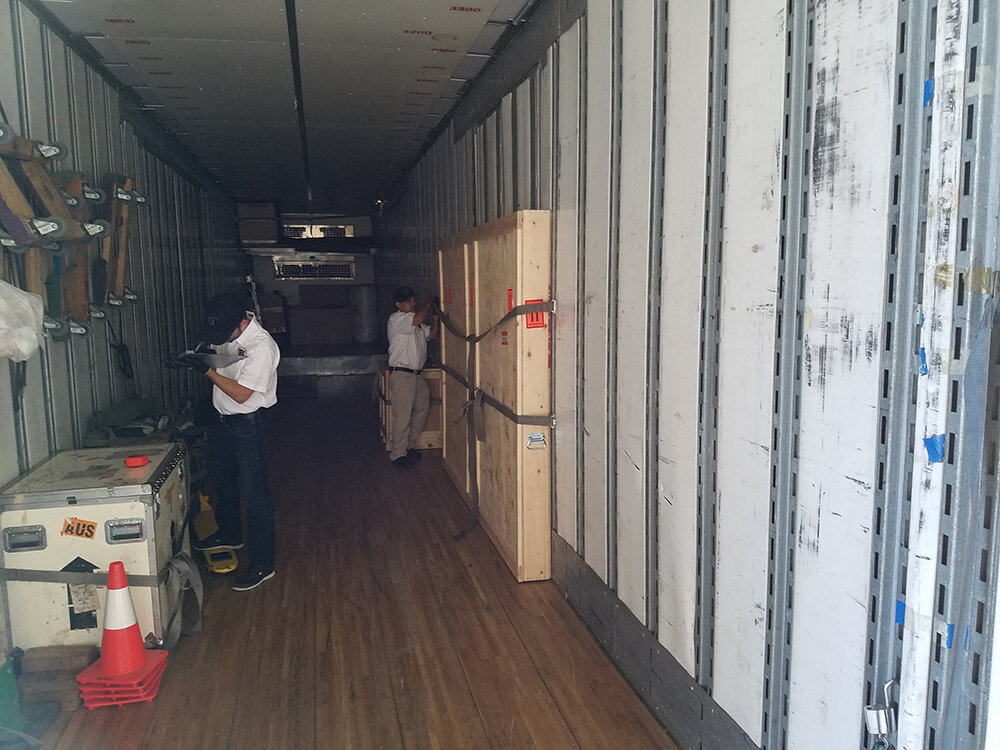Semillas represents my second large scale figurative painting. What I now understand, is Birth of Venus served as the benefactor of Semillas. While the developmental strategies were similar, I was able to use these schemes in a much more efficient way. Semillas was a struggle in its own right (as most of my paintings are), but in comparison to Venus, it took months, compared to over a year.
In a way, I see Semillas as a ‘sister’ painting to Venus. My vision was to likewise create a painting that represented the cycles or dynamics of birth and death—but inverted. Rather than nesting the destructive elements in the painting, my vision was to embed the generative element instead. The painting was named Semillas, which means ‘seeds’ in Spanish, for the tiny figures inside each droplet which fall from the fiery image of destruction.
This painting eventually began to be recognized. I submitted it to the 12th International Art Renewal Center (ARC) Salon, the largest and most prominent competition for classical realist artists with thousands of works competing across nine categories. To my utter astonishment, it won Best of Show in this competition. Semillas was first shipped to Denver, Colorado where it was shown at the Abend Gallery and then purchased by Fred Ross, Founder of ARC.
As a winning work, Semillas was part of a traveling live exhibition. From Denver, Semillas was shipped to New York City where it was shown at the Salmagundi Club. From here it was transported to Barcelona, Spain and shown as the featured piece in the 2016/2017 ARC collection at the European Museum of Modern Art (MEAM).
The ARC requested a writeup for this piece to be included in the Competition Catalogue. This created the unavoidable need to describe the painting. As is the case with any literary task I face (including this one), I landed a lot of help. Here’s what was featured in the catalog:
I’ve always been fascinated by fire; its role in the development of our civilization, its quiet warmth and illumination, its power, speed and destructive potential. While I can’t consciously claim that the stories below inspired Semillas, they were evoked as I developed the piece, and upon reflection after it was completed.
A childhood memory encompassing this fascination involves me as a curious six-year old boy, lighting a ball point pen on fire over the concrete floor of my basement (much to the chagrin of my parents). The plastic case bubbled and shrank as it burned. Then, to my surprise and panic, little fire balls of ink began to drip from the ignited pen, creating a flaming puddle on the floor. Startled, I attempted to stomp it out, but only succeeded in getting the flaming ink stuck to my shoes. Only after escalating my stomp up to a full-fledged freak-out dance was the fire puddle finally extinguished.
Several years later as an adolescent, I recall images of Kuwait’s burning oil fields on the nightly news. Like the ink ablaze in the basement, I remember finding this storm of fire utterly terrifying and almost other worldly. How those oil wells could burn incessantly, too powerful to be extinguished, and fill the sky with clouds of smoke as far as the eye could see.
It is entirely possible that these memories were woven into the content of Semillas, but to me this is hypothetical. The gilded fire droplets in the painting harken back to those ink fireballs from my youth. Whether these memories subconsciously inspired me, I cannot say for certain.
I can say that it is the tiny figures inside those droplets that ultimately inspired the title Semillas, which means ‘seeds’ in Spanish.
In the experimental stages of Semilllas, I began working with the elements of fire and gold on both visual and thematic levels. I was also inspired by artworks of the Hindu goddess Kali; who represents elements of death, time, and doomsday and is often associated with sexuality and violence, but is also considered a strong mother-figure and symbolic of motherly-love. Kali also embodies shakti – feminine energy, creativity and fertility.
Semillas was developed through many studies and iterations. Like many of my projects, I began with a vision in mind that I presumed simply needed extraction to the canvas. However, like trying to translate a dream, the moment pencil hit paper, the friction began.
The extensive studies were the result of frustration as my initial vision grew elusive as I attempted to translate it to paper. I tried many variations: in one of its early incarnations, the figure had multiple arms in a spiral gesture. Another had a frenzied pattern of hands and blades. Yet another with the figure descending out of a cloud formation, its head and arms obscured.
None of these studies flowed directly from that original vision, and ultimately, I’m glad they didn’t. They provided the raw material to allow the project to evolve. Through this process the painting became more simplified and elemental. Interestingly, I think that helped bring out the essence of the original vision, just in a different form than I had imagined.
IN THE STUDIO
(West Seattle)
KRAB JAB GALLERY
(Georgetown, Seattle)
PRESENTATION AT
KRAB JAB GALLERY
EXPLORE The Development of Semillas
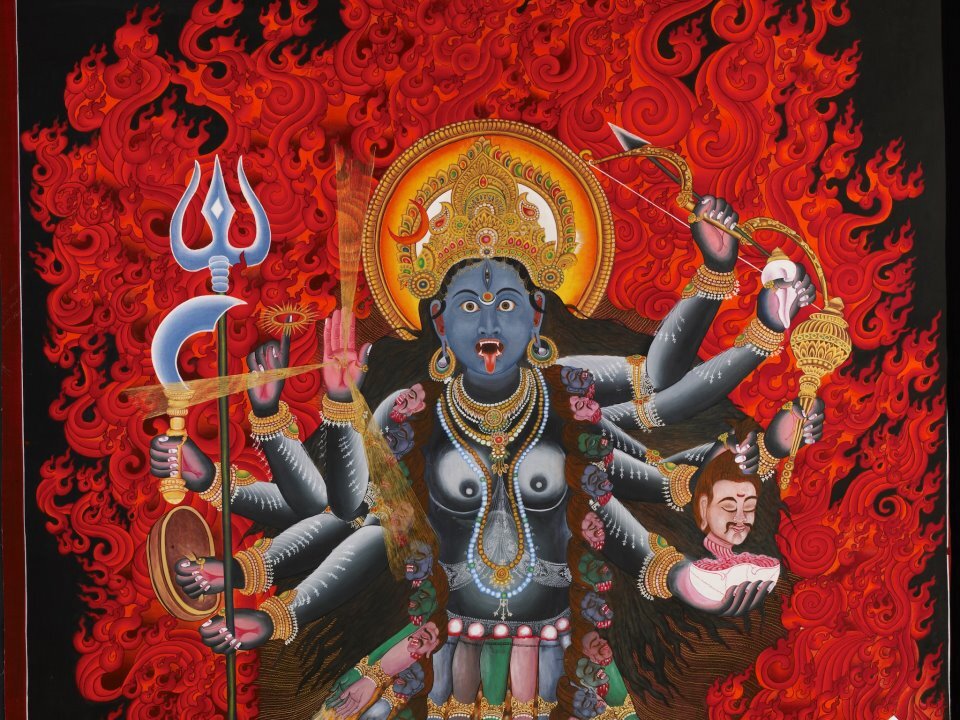
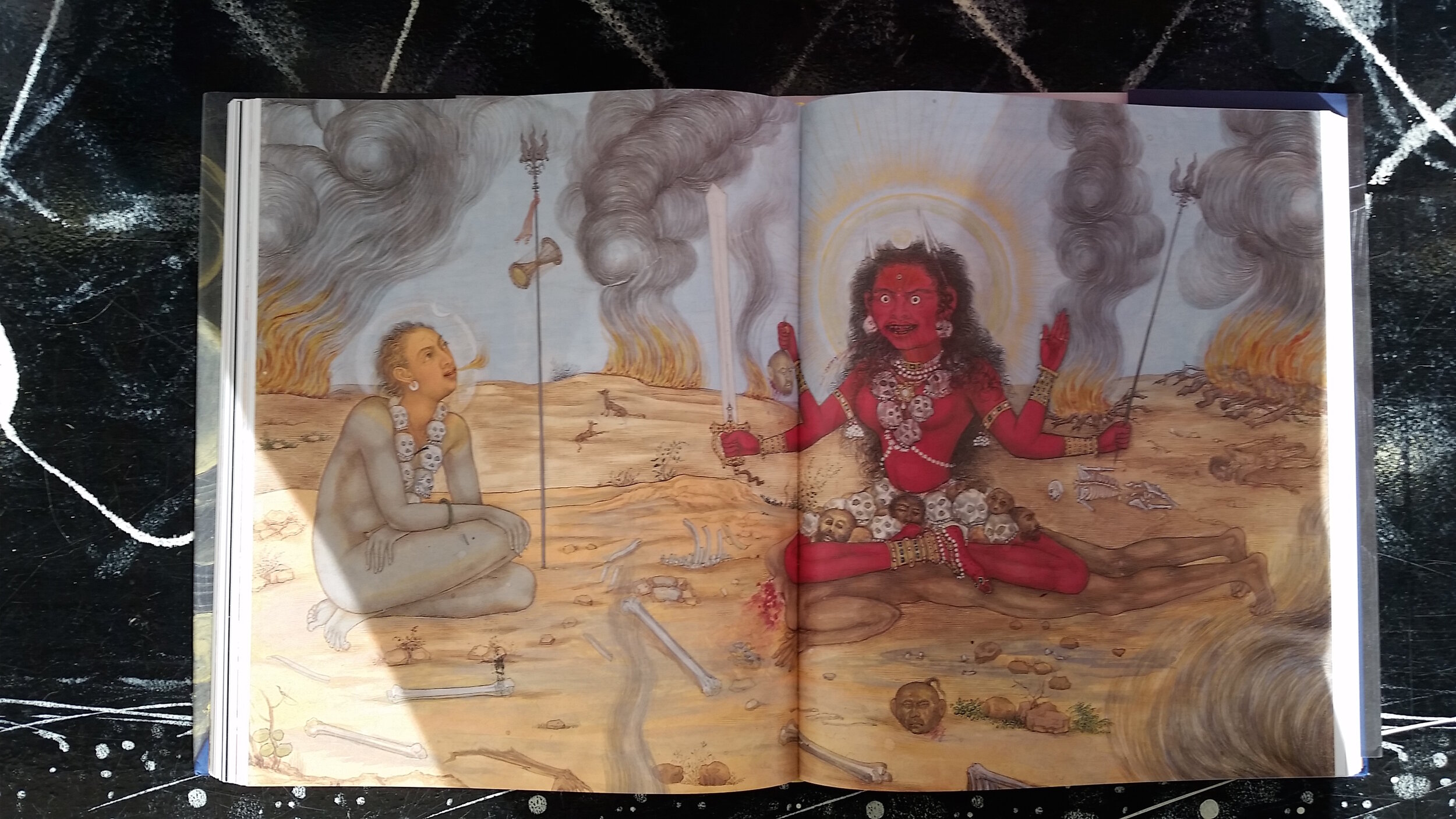
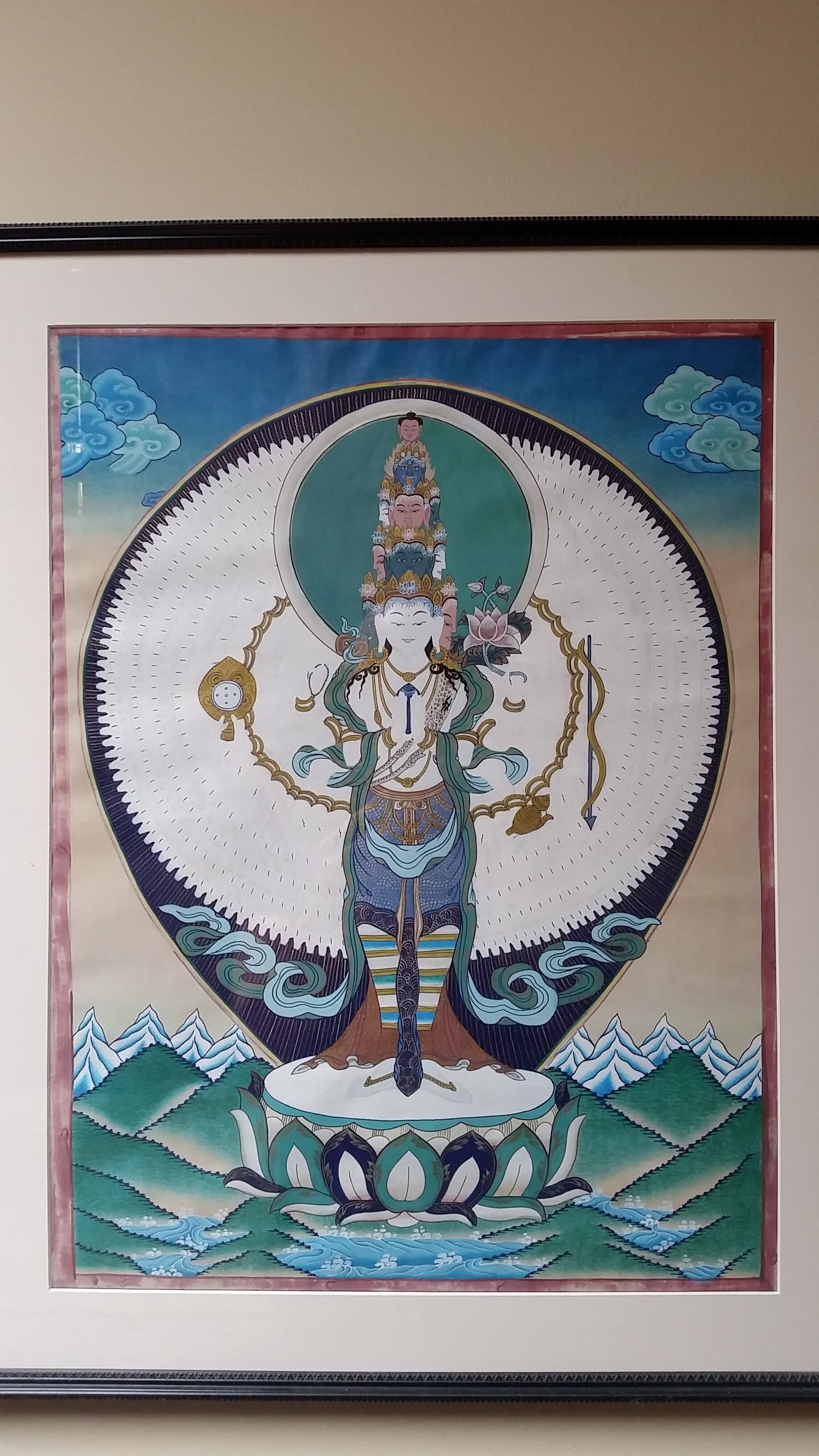
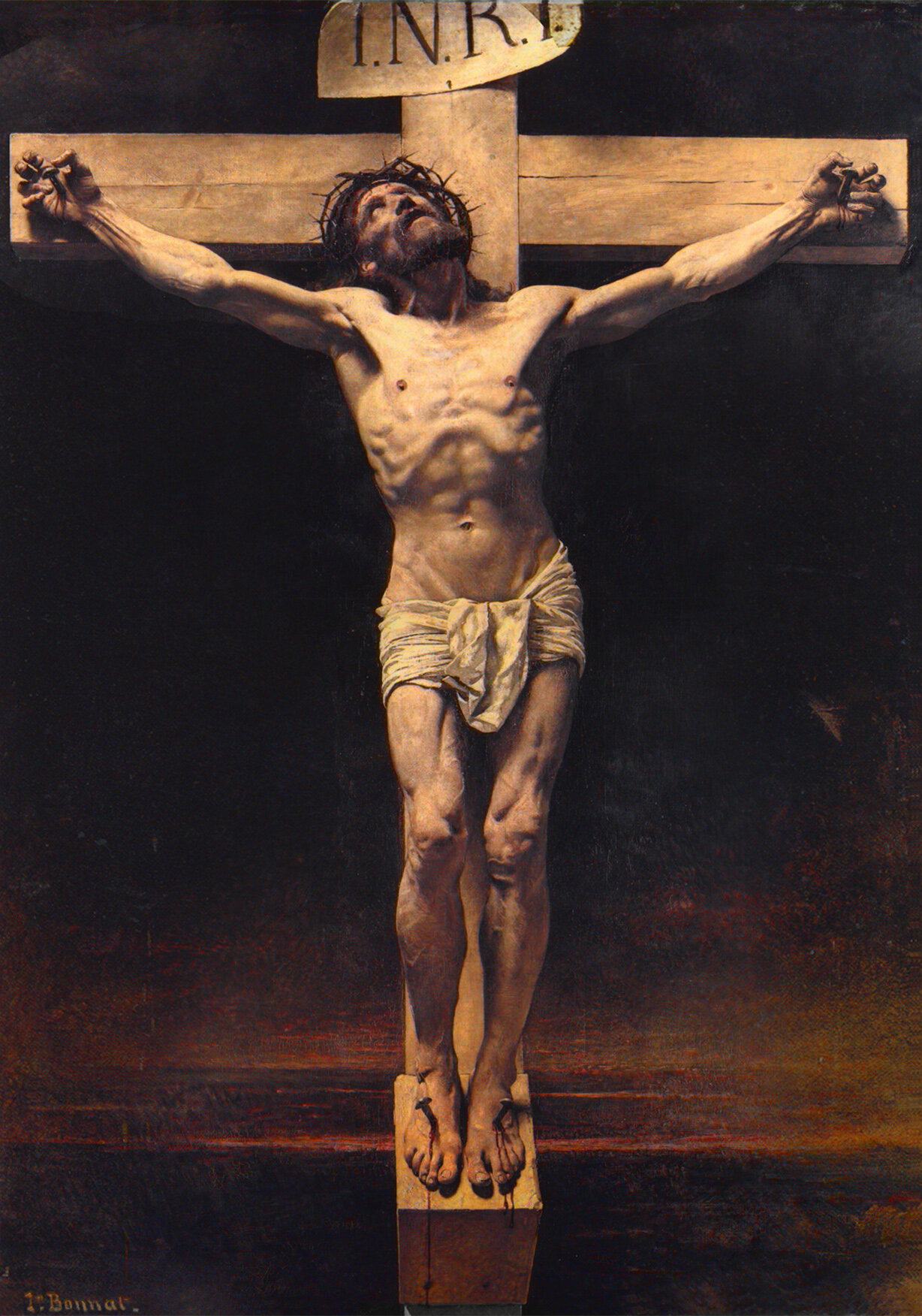
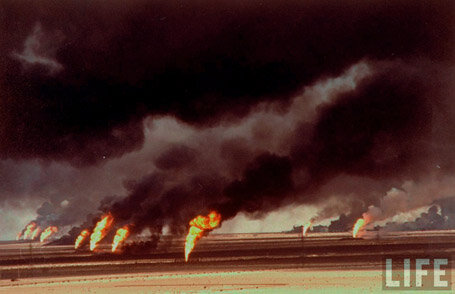

This sketch, drawn on a roughly 1” x 2” napkin with a ball point pen, formed the nucleus of the painting. While a great many things changed from this initial conception, the core compositional abstractions remained constant throughout.
As in Birth of Venus, I was again looking at Tibetan Thangka paintings for inspiration, but also at Christian crucifix paintings. At this early stage, I imagined graphic shapes (particularly the framing circle) to play a more prominent role in the painting; with the head of the figure placed within the radius, which is also at the 1/3 and 1/4 compositional intersection. You’ll also notice the figure has multiple arms rotating within this circle.
I had recently taken a workshop where I learned the basics of gilding with gold leaf. I was interested in combining elements of fire and gold into the painting. In this version, the circle surrounding the figure is gold along with a stream or pathway on the ground plane.
I began developing the headdress which extends from the veiled figure along the diagonal of the composition. For this headdress, I was researching objects and materials adorned in war by various cultures throughout history. I was also playing around with dividing the circle into dark/light halves, somewhat similar to a yin/yang symbol. Within the darker side, the arms wield blades, while the circle is surrounded by gold fire, like an eclipse. As the arms rotate along this wheel into the light side, I imagined the hands gradually taking on a more opened palm reconciliatory position, potentially holding a small seed.
I started to feel the piece was becoming too heavily symbolic. I generally prefer to embed representational elements into the painting on a more primary level than to codify them into symbols. I began by dissolving the circle shape into the sky clouds and also thinking about the use of the gold leaf in a more organic, elemental way. For these studies, I used a gold pen to simulate where the gilding might emerge in the final painting.
I felt better about this general direction, so I worked on a larger drawing (about 9” x 12”) to develop it further. You’ll notice that the figure at this stage appears much more emaciated and crucified than how it finally emerged.
One of the models my assistants and I worked with was also a trapeze artist. Given this, she had the ability to do suspended poses. She offered to do these poses at her dance studio, and I thankfully took her up on this offer. I was amazed in her ability to hold a pose that was so closely aligned to the one I envisioned.
With the new figure reference, I drew a more accurate block-in of the figure and scanned this into the computer.
I began working on the prototype in a similar manner as with Birth of Venus. At this stage, I was still experimenting with adding back in the circular graphic shape. After further experimentation, the final prototype began to take shape. I printed the prototype and used a gold pen to experiment with variations on where to place it in the composition.
I was still imagining the figure emerging or falling out of a clouded veil of sorts but was receiving some feedback that because the head was so obscure, it was jarring. Thinking this criticism valid, I thought it best if the head and face could, at least, be more partially seen. This turned out to be a difficult task however, as grafting a new head onto an existing pose is structurally challenging. As well, the upper body of my photo reference was very different from what it needed to be in this direction.
My first attempt was to have the head looking more to the upper right, but I didn’t like how that was turning out. I asked a friend of mine to pose her head tilted back, but in more parallel alignment with the center axis of the body in my drawing. Using that as reference, along with one I took of myself, I drew the new head.
In Photoshop, I aligned and proportioned the new head drawing so that it attached to the body. I then did a digital paint-over to seam it together. I wanted to make the ‘smoke veil’ appear somewhat alive in the way it surrounded the figure. Using the new head drawing as a base, I depicted the smoke pattern on top.
The concept, form, composition, texture, and color were now all compiled into what felt ‘right’. Now, I was ready to begin the actual painting.
SEMILLAS IN SPACES AROUND THE GLOBE
Shipping Semillas to Abend Gallery (Denver, CO)
I was invited to show Semillas at Abend Gallery in Denver, Colorado. I had never shipped such a large painting before and found this task to be quite the endeavor. I hired my fried, Joel, to build the crate. It was designed so the painting could be suspended without needing to take it off the stretcher bars. It was during this time, that I was notified Semillas won Best in Show in the 12th International Art Renewal Center (ARC) Salon.
Preparing to place the painting in the crate.
The painting suspended in the crate.
Sealing the crate.
Moving it into the shipping truck.
Off she goes!
Semillas at the Salmagundi Art Club
(New York, NY)
After being purchased from Abend Gallery, Semillas then travelled to New York’s Salmagundi Art Club as part of the ARC Salon Show. Here, you can see me doing a little bit of varnishing touch-ups in a few places. It was great to see my friend and fellow artist in the show Rob Liberace, who’s pictured with myself and my darling little girl, Ember.
Semillas at the European
Museum of Modern Art— ‘MEAM’
(Barcelona, Spain)
Next up was the official awards ceremony at the European Museum of Modern Art (MEAM) in Barcelona, Spain. After a fantastic introductory speech by Kara Ross, ARC’s Chief Operating Officer, the artists of the show were named and honored. For winning Best in Show, I was asked to be on the panel and give a presentation on the painting of Semillas. In essence, here’s part of I said: “Legend has it that Michelangelo saw the figures in the marble, and simply set them free. I wish I could say the same about how Semillas and my other works of art come to be. Unfortunately, my paintings only seem to come about after a long trial of them kicking and screaming and not wanting to show themselves in this realm.” It was a huge honor and pleasure to be in the show. It was also great to see and meet so many talented artists whose works were also presented at the MEAM.
Daniel Graves is founder of The Florence Academy of Art and is known as an ‘ARC Living Master’. Before I met Daniel on this trip, I had the idea that he was probably stern and rigid (I’m not exactly sure why). As it turns out, it was such a privilege to present on the panel with him and have the opportunity of getting to know him. I found Daniel to be such a thoughtful, insightful, and all around inspiring person.




